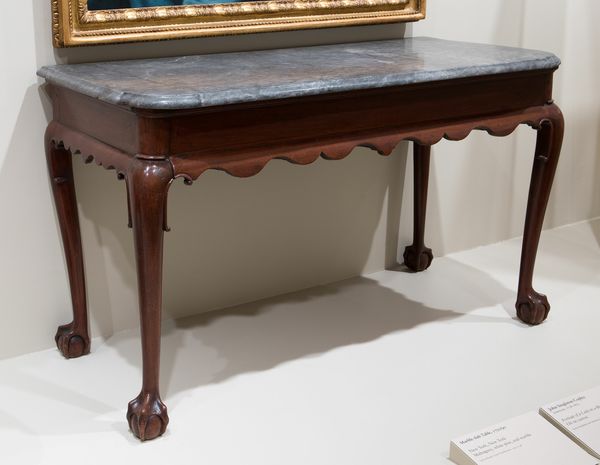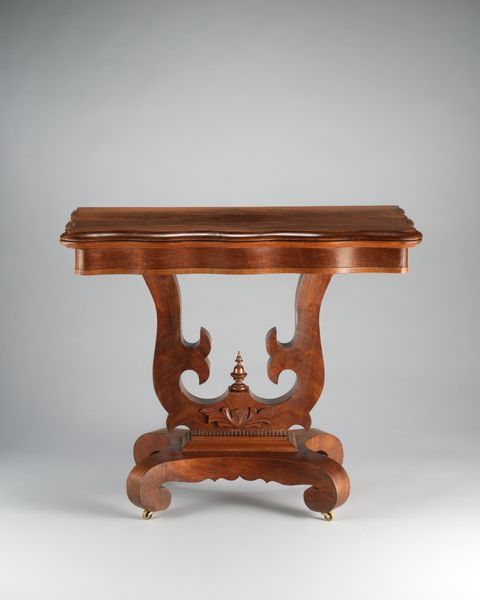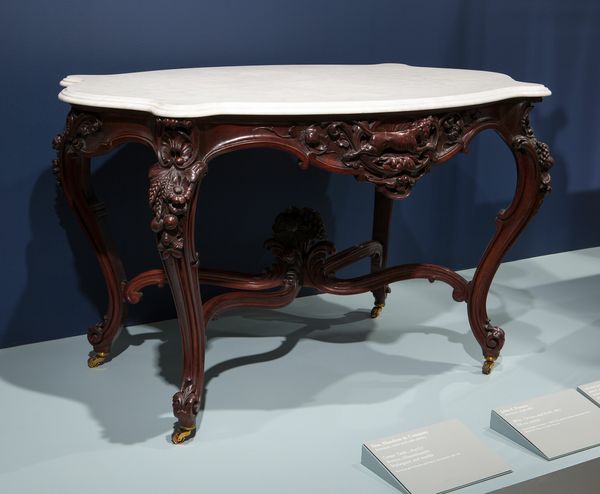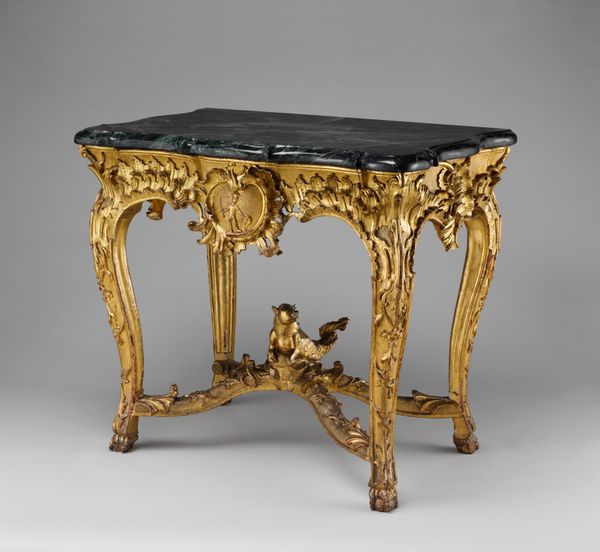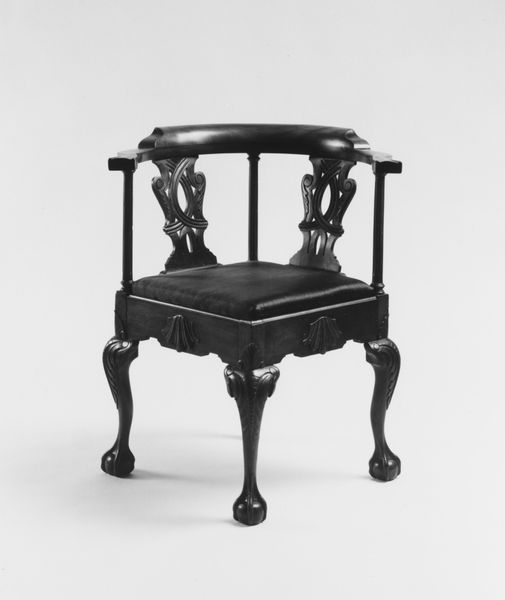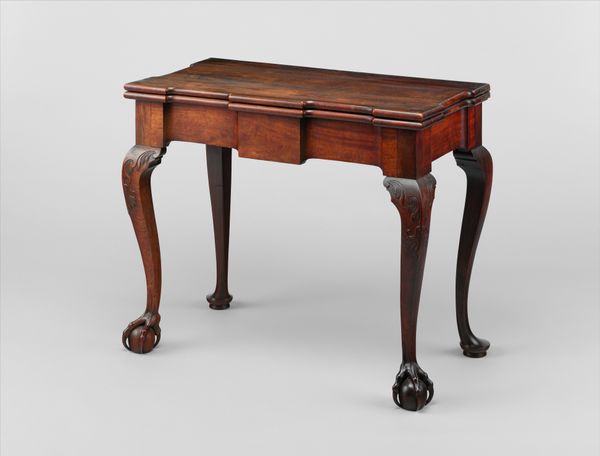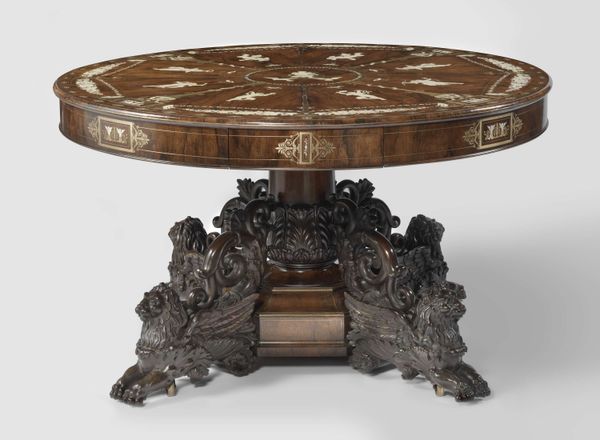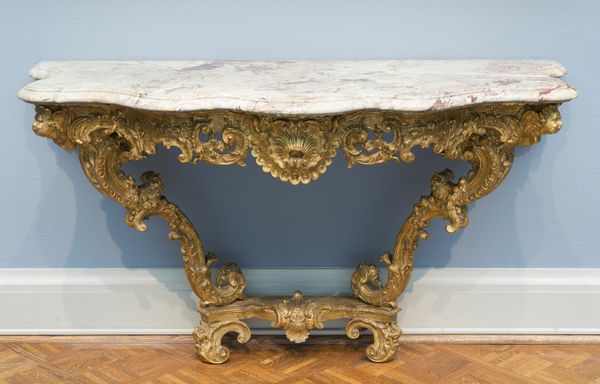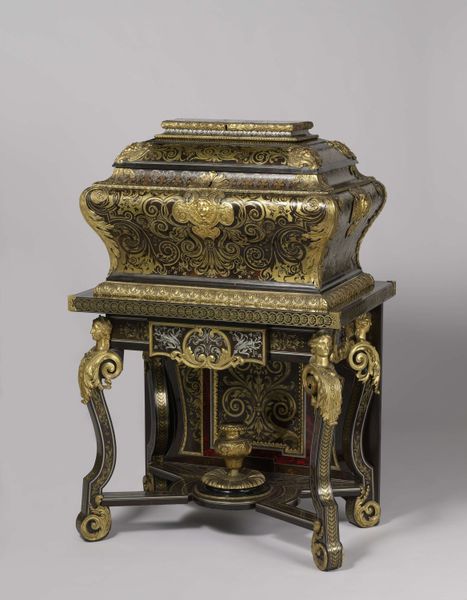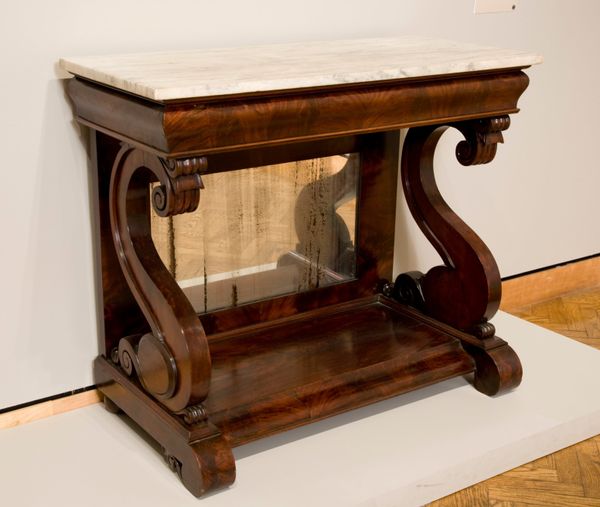
Dimensions: 77.1 × 87.6 × 62.2 cm (30 3/8 × 34 1/4 × 24 1/2 in.)
Copyright: Public Domain
Editor: This is Edward Hutchings' Center Table, created in 1869. The materials include both wood and metal. The overall impression I get is one of ornate detail, yet somehow the table still feels grounded and stable. What catches your eye about this piece? Curator: Formally, the table strikes me as an intricate dance of contrasts. Note how the dark wood is punctuated by gilded metal accents. It directs the eye on a compelling journey around the piece, exploring the relationship between curvature and linearity, support, and surface. Editor: Could you elaborate on the importance of the contrast and shapes you noted? Curator: Observe the curvature within the table’s base – a repeating motif that speaks to a visual rhythm that unifies the sculpture. Now consider its juxtaposition with the severe geometric lines of the tabletop. The dark wood gives an essential gravity, even a melancholy, without which it might float away like a baroque fantasy. Editor: I see what you mean. So it’s the tension between these elements that makes the piece successful? Curator: Precisely. It isn't just decorative excess; the choice of materials and shapes work in tandem to evoke both weight and lightness, creating a captivating structural narrative. We can ask, how do these details impact our sense of balance in the piece? Editor: That is quite a complex consideration. Thank you. I will certainly consider the relationships you brought up when viewing this type of art going forward. Curator: I hope that considering visual strategies enriches your understanding of how this piece and others construct meaning and generate aesthetic responses.
Comments
No comments
Be the first to comment and join the conversation on the ultimate creative platform.
